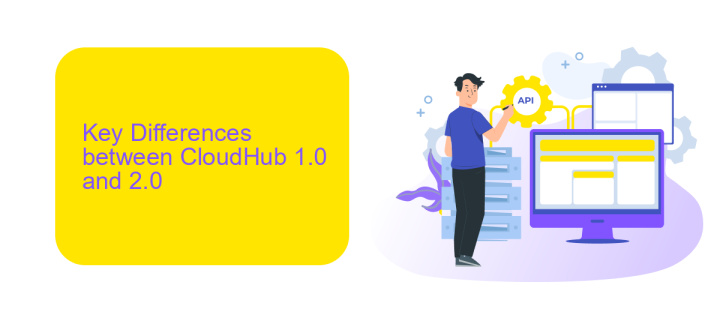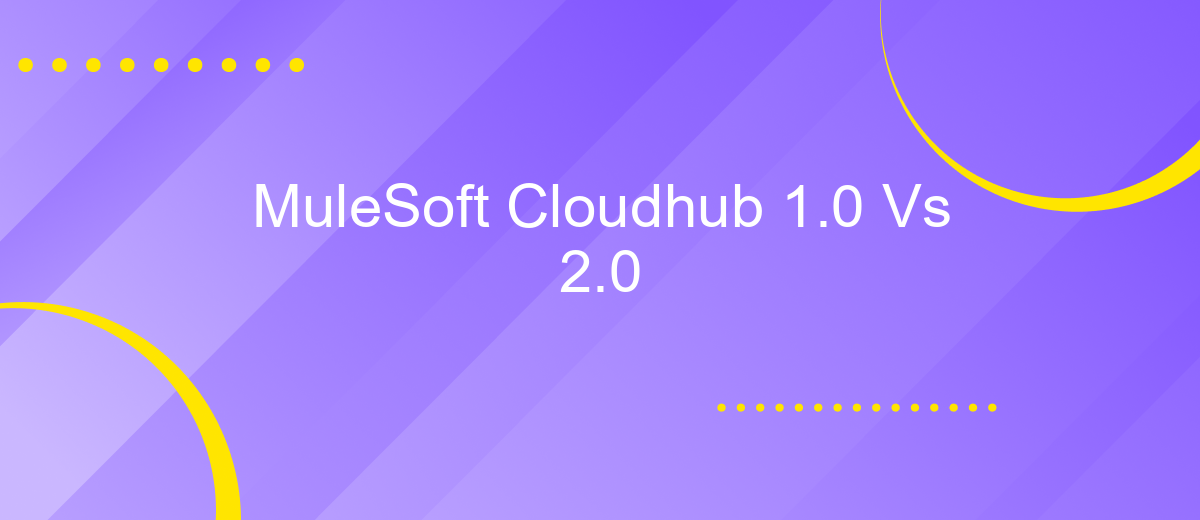MuleSoft Cloudhub 1.0 Vs 2.0
MuleSoft's Cloudhub is a leading integration platform as a service (iPaaS) that has evolved significantly from its 1.0 to 2.0 version. This article delves into the key differences, enhancements, and new features introduced in Cloudhub 2.0, offering a comprehensive comparison to help organizations understand how the latest version can better meet their integration needs and drive digital transformation.
Introduction
MuleSoft Cloudhub is a widely used integration platform that enables businesses to connect applications, data, and devices seamlessly. With the release of Cloudhub 2.0, there are significant enhancements and new features that promise to improve performance, scalability, and user experience.
- Enhanced scalability and performance
- Improved user interface and experience
- Advanced monitoring and analytics
- Better security and compliance
Both Cloudhub 1.0 and 2.0 offer robust tools for integration, but the latest version brings substantial improvements. For businesses looking to streamline their integration processes, services like ApiX-Drive can complement MuleSoft Cloudhub by providing additional automation and ease of use. This comparison will delve into the key differences and help you decide which version suits your needs best.
Key Differences between CloudHub 1.0 and 2.0

CloudHub 1.0 and 2.0 differ significantly in their architecture and capabilities. CloudHub 2.0 introduces a more modern, containerized architecture, allowing for greater scalability and flexibility. This new version supports Kubernetes-based deployment, enhancing resource management and orchestration. In contrast, CloudHub 1.0 relies on a more traditional VM-based infrastructure, which can be less efficient in handling dynamic workloads.
Another key difference is in the integration and deployment processes. CloudHub 2.0 offers improved CI/CD pipeline support and integrates more seamlessly with third-party services like ApiX-Drive, which simplifies the setup and management of integrations. This is a major upgrade from CloudHub 1.0, where integration and deployment were more manual and less streamlined. Additionally, CloudHub 2.0 provides enhanced monitoring and analytics capabilities, offering better insights into application performance and resource utilization.
Benefits of Upgrading to CloudHub 2.0

Upgrading to CloudHub 2.0 offers numerous advantages that can significantly enhance your integration capabilities and overall performance. The new version introduces advanced features and improvements designed to streamline your operations and boost efficiency.
- Enhanced Scalability: CloudHub 2.0 provides better support for scaling your applications, ensuring they can handle increased loads and grow with your business needs.
- Improved Performance: With optimized resource management and faster processing times, CloudHub 2.0 delivers superior performance compared to its predecessor.
- Advanced Security: The latest version includes enhanced security features to protect your data and integrations from potential threats.
- Seamless Integration: CloudHub 2.0 supports a wider range of integration tools and services, including ApiX-Drive, making it easier to connect and automate your workflows.
- Better User Experience: The updated interface and user-friendly features simplify the management and monitoring of your integrations.
Overall, upgrading to CloudHub 2.0 is a strategic move that can lead to improved operational efficiency, better security, and a more scalable infrastructure. By leveraging the new features and integrations, such as those offered by ApiX-Drive, businesses can stay ahead in the competitive landscape and achieve their digital transformation goals more effectively.
Migration Considerations

When planning a migration from MuleSoft Cloudhub 1.0 to 2.0, it's important to consider several factors to ensure a smooth transition. Firstly, evaluate the compatibility of your existing applications and integrations with the new platform. This step will help identify any potential issues that could arise during the migration process.
Another critical aspect is the data migration strategy. Ensure that your data is securely transferred and that there is no data loss or corruption during the transition. Utilizing services like ApiX-Drive can facilitate seamless integration and data transfer between different systems, minimizing the risk of disruptions.
- Assess application and integration compatibility
- Develop a robust data migration strategy
- Utilize integration services like ApiX-Drive
- Conduct thorough testing post-migration
Finally, it's essential to conduct comprehensive testing once the migration is complete. This will help verify that all applications and integrations are functioning as expected in the new environment. By considering these factors, you can ensure a successful migration to MuleSoft Cloudhub 2.0.
Conclusion
In conclusion, MuleSoft Cloudhub 1.0 and 2.0 offer robust solutions for integration needs, each with its unique strengths. Cloudhub 1.0 has been a reliable platform, providing essential tools for seamless integration and API management. However, Cloudhub 2.0 takes these capabilities to the next level with enhanced performance, scalability, and user-friendly features, making it a more powerful option for modern enterprises.
As businesses continue to evolve, the need for efficient integration platforms becomes even more critical. Tools like ApiX-Drive can complement MuleSoft's offerings by providing additional automation and integration capabilities, ensuring that all systems work harmoniously together. Whether you choose Cloudhub 1.0 or 2.0, leveraging supplementary services like ApiX-Drive can further streamline your integration processes, ultimately driving better business outcomes.
- Automate the work of an online store or landing
- Empower through integration
- Don't spend money on programmers and integrators
- Save time by automating routine tasks
FAQ
What are the main differences between MuleSoft Cloudhub 1.0 and 2.0?
Can I migrate my existing applications from Cloudhub 1.0 to Cloudhub 2.0?
Is there a difference in pricing between Cloudhub 1.0 and 2.0?
Do I need to make any changes to my existing integrations when upgrading to Cloudhub 2.0?
What tools can assist in automating and setting up integrations on MuleSoft Cloudhub?
Apix-Drive is a simple and efficient system connector that will help you automate routine tasks and optimize business processes. You can save time and money, direct these resources to more important purposes. Test ApiX-Drive and make sure that this tool will relieve your employees and after 5 minutes of settings your business will start working faster.


